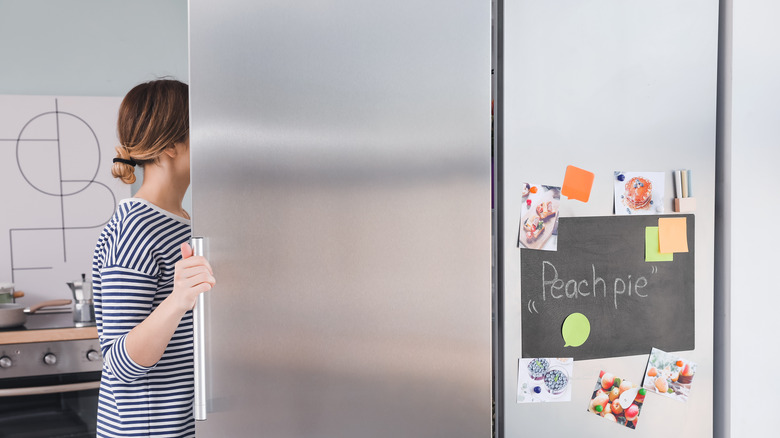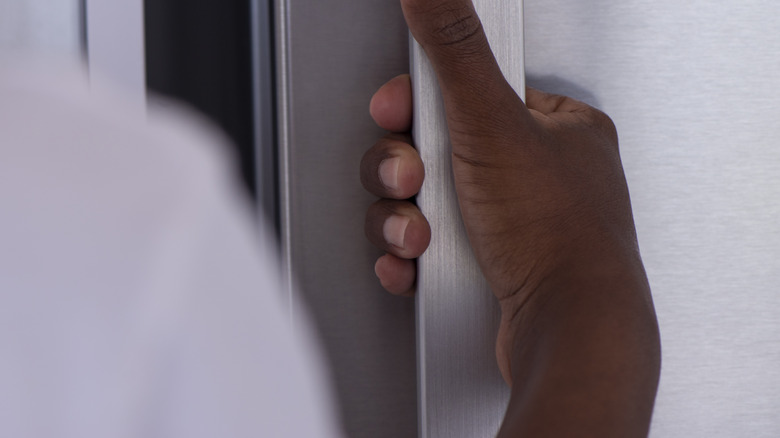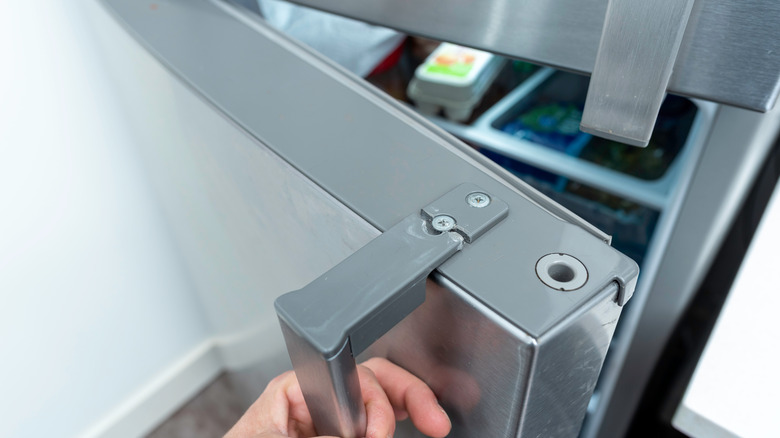The Best Way To Fix Loose Handles On A Refrigerator Door
Fixing a loose handle on your refrigerator door is usually a straightforward DIY project you can accomplish with basic tools and some know-how. A loose handle on a refrigerator door is not just a minor annoyance; it's a sign that it wasn't installed correctly, which can lead to other issues down the line. Before you contemplate calling in a professional or even replacing your fridge, rest assured that you can most likely fix the problem yourself with just a few basic tools and a bit of guidance.
Understanding your specific type of fridge handle is the first step toward a successful DIY repair. You generally encounter a few different styles, each with its own attachment and securing mechanism. Those known as French door fridge handles are fairly common. On the other hand, you have handles with special features like a locking tab or an end cap. The locking tab is a mechanism that helps keep the handle firmly in place. As for the handles with end caps, they usually have these caps on either end of the handle, covering the area where the handle attaches to the door. These end caps can add a finished, polished look to your appliance, masking screws or other hardware and offering a cleaner appearance. Once you've identified that, you can gather the appropriate tools and get to work. It's a straightforward task but one that demands attention to detail.
How to fix a stainless steel handle
Before attempting to fix a loose or broken stainless steel handle on your fridge, first, ensure you have an Allen wrench on hand; the size you'll need depends on the specific screws your fridge handle uses. If your handle is wobbly but still attached to the door, your first step is simple: tightening the screws. Locate the screws on the inner sides of the handle. Insert your Allen wrench into these screws and turn them clockwise to tighten them. Be firm, but avoid overtightening, as that could strip the screws and create new problems. Once tightened, give the handle a few tugs to ensure it's secure.
However, if your handle is completely detached or broken, you'll need a replacement handle and your Allen wrench. First, use the wrench to remove the screws from the mounting fasteners where the handle attaches to the fridge door. Hold onto these screws, as you'll need them to attach the new handle. Next, align your new handle with the mounting fasteners on the door. Once the fasteners are partially in, use your Allen wrench to tighten them the rest of the way. If your new handle has its own set of screws, you can use those instead. Again, avoid overtightening the screws; snug is sufficient. Lastly, check the stability of the new handle by opening and closing the door a few times.
How to fix a handle with an end cap or a locking tab
If your fridge handle features end caps on both ends, you'll need the right screwdriver on hand — in this case, a small and thin one. Gently insert this into the side edge of one of the end caps. Apply a bit of pressure to carefully pop off the cap, revealing the bolt beneath it. Tighten this hidden bolt by using the correct wrench. Turn it until it feels snug, but be cautious not to overtighten it, as that could damage the threads. Once you're satisfied with the tightness, align the end cap back onto the handle and press it until it snaps securely back into place.
Alternatively, your approach needs a minor adjustment if you're working with a fridge handle equipped with a locking tab. Initially, look for this locking tab, which is usually positioned underneath the handle, more specifically at the upper section of it. Gently press down on this tab and, at the same time, lift the handle upwards in the opposite direction of the fridge door to detach it. This action exposes the mounting stud. For the next step, arm yourself with a 3/16-inch Allen wrench. Insert this into the now-visible mounting stud and rotate it clockwise. Tighten it until it feels firm. Having achieved the desired tightness, line up the handle with the mounting stud and door, engaging the locking tab as you push the handle back to its original position.


